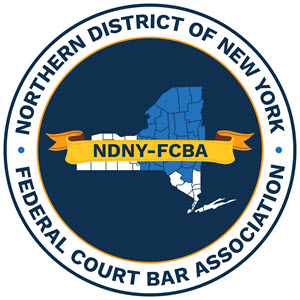The reenactment of the 1873 trial of Susan B. Anthony came to Syracuse on the evening of April 19, 2018, drawing a crowd or more than 100 people to the Ceremonial Courtroom of the James M. Hanley Federal Building.
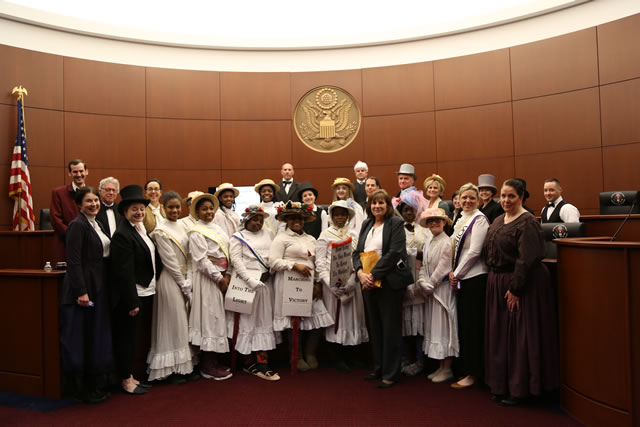
Cast photo
Presented by the FCBA and directed by United States District Judge Mae A. D’Agostino, the two-act play, which had its NDNY premiere in Albany on November 16, 2017, was based on the trial transcript of the 1873 criminal prosecution of Anthony in the NDNY for voting illegally (as a woman) in the 1872 election. United States Attorney Richard Crowley prosecuted Anthony in Canandaigua, New York, then part of the NDNY. Newly confirmed United States Supreme Court Associate Justice Ward Hunt presided over the trial, as a visiting judge to the Second Circuit, to which the case had been removed.
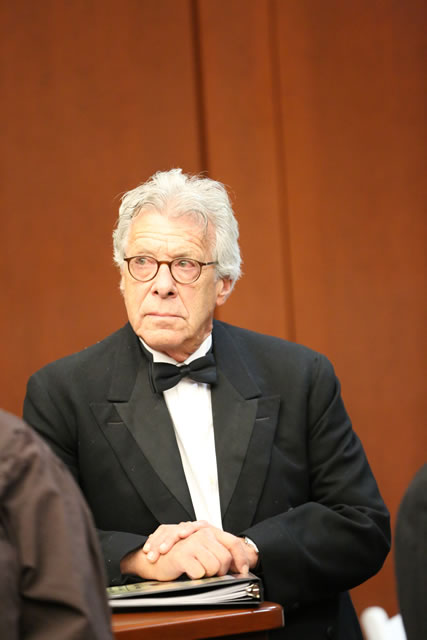
Edward Z. Menkin
Cast members consisted of judges, lawyers, law school professors and students, and grade school students, all dressed in the style of the time.
United States Magistrate Judge Thérèse Wiley Dancks served as the narrator, Albany Law School Professor Mary A. Lynch played Susan B. Anthony, Federal Public Defender Investigator John O’Brien played election register Beverly Jones, United States Attorney Grant C. Jaquith played his predecessor United States Attorney Crowley, attorney Edward Menkin played Anthony’s lawyer Henry Selden, FCBA President Mitchell Katz played her other lawyer John VanVoorhis, and NDNY Deputy Clerk John M. Domurad played Justice Hunt. (The full cast list is available here.)
Chief United States District Judge Glenn T. Suddaby opened the event by welcoming the packed audience. “Over the years, the Court has offered numerous public outreach and educational programs to grade schools, high schools, colleges and law schools – things like mock trial competitions, essay contests and naturalization ceremonies. The reenactment of historical trials is a new program that we are very excited about and we hope you enjoy.”
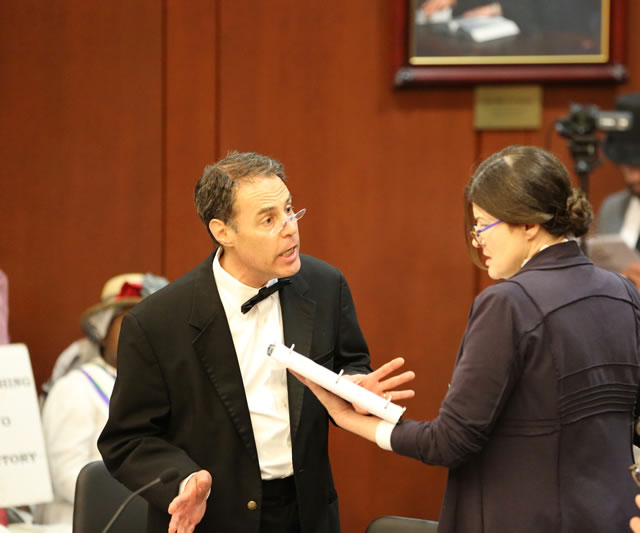
FCBA President Mitch Katz and Albany Law Professor Mary Lynch
Anthony, a civil rights activist, attempted to register to vote in Rochester several days in advance of the presidential election of 1872, expecting to be turned away and thus obtain standing to file a lawsuit in federal court challenging laws that permitted only men to vote. After she was permitted to register, she returned on Election Day and convinced election inspectors to allow her to vote.
Twelve days later she was arrested for voting for two members of the U.S. House of Representatives “without having a lawful right to vote,” in violation of Section 19 of the Enforcement Act of 1870.
In her defense at trial, her lawyers argued that the Fourteenth Amendment to the Constitution gave women the right to vote because it included women in its definition of U.S. citizens, and it barred states from depriving U.S. citizens of the privileges and immunities of citizenship, which included the right to vote. At the very least, they argued, she did not knowingly violate section 19 because, acting on the advice of counsel, she had acted in a good-faith belief that she had the lawful right to vote. Not only did Justice Hunt reject her lawyers’ arguments, he precluded her from testifying, permitted her prior testimony to be relayed by another witness, and directed the jury to enter a verdict of guilty rather than permit it to deliberate on the evidence presented at trial. (The Federal Judicial Center has published a history of the trial, available here.)
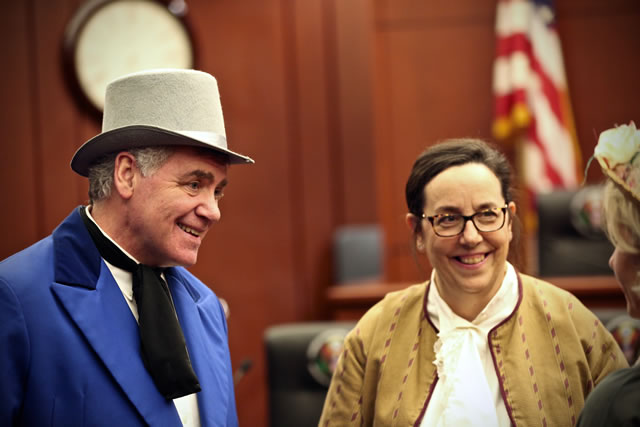
Federal Public Defender Investigator John O’Brien and United States Magistrate Judge Thérèse Wiley Dancks
Nearly 50 years passed before the Nineteenth Amendment, ratified in 1920, gave women the right to vote, though some states afforded the right to women before the Amendment’s passage, such as New York in 1917.
A catered reception, on the Courthouse’s third floor, followed the reenactment.
After complimenting Judge D’Agostino on a great event, Chief Judge Suddaby told her, “You have set a high standard for programs in the future.”
The Susan B. Anthony trial transcript is available through the Second Circuit’s Justice for All initiative, which maintains a database of transcripts of historic trials as part of an effort to educate the public about important events and issues that have previously been litigated in United States courts.
